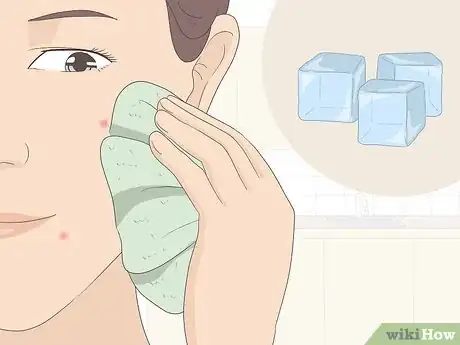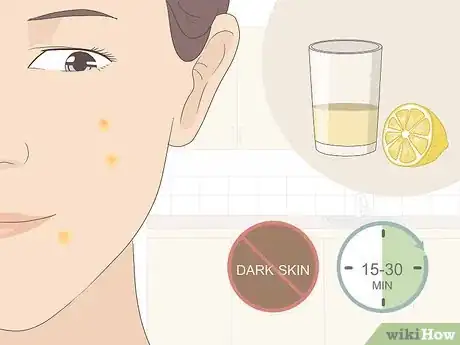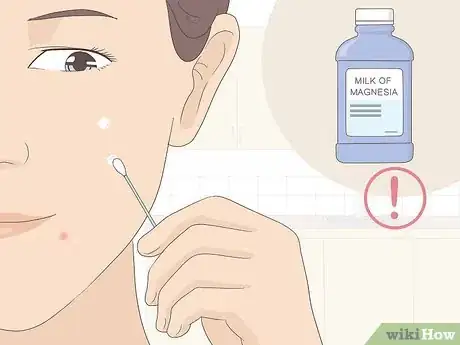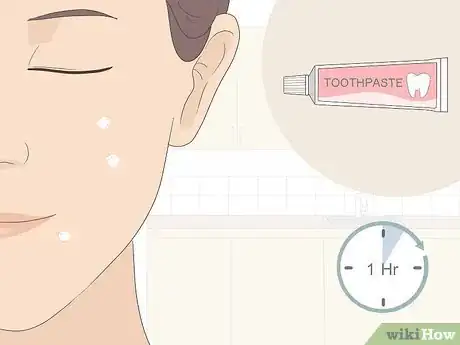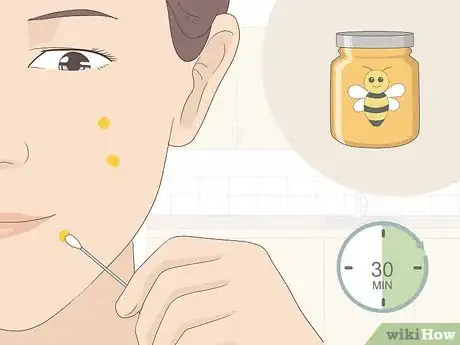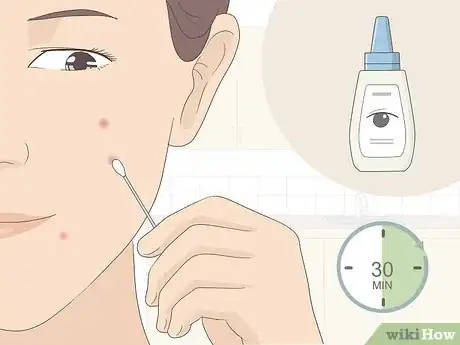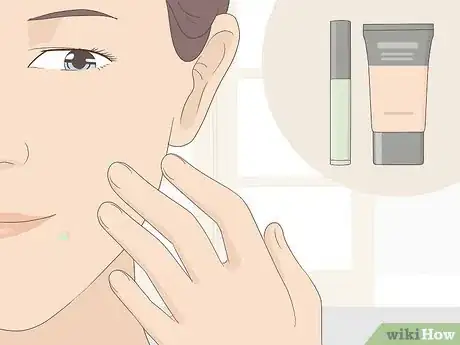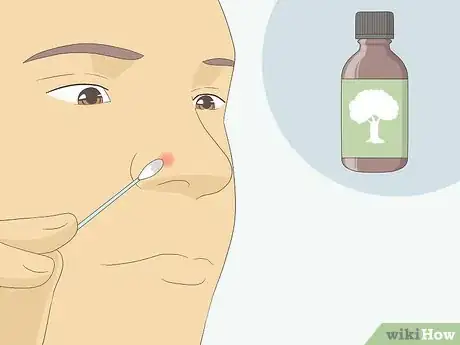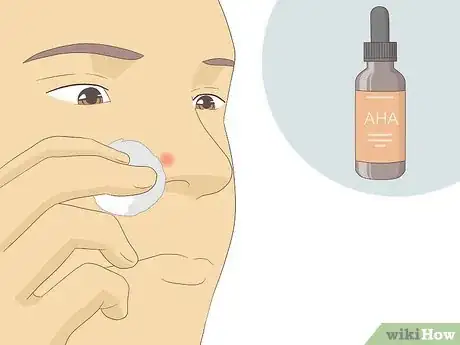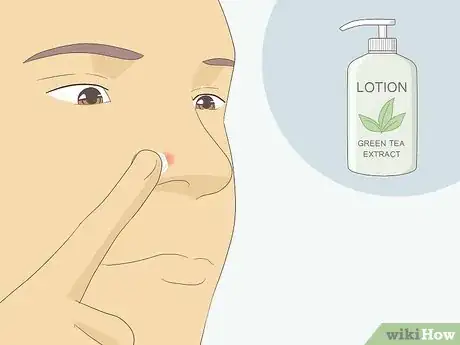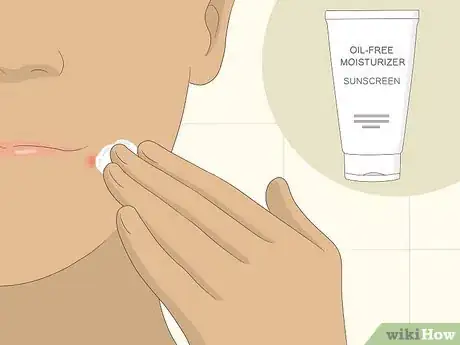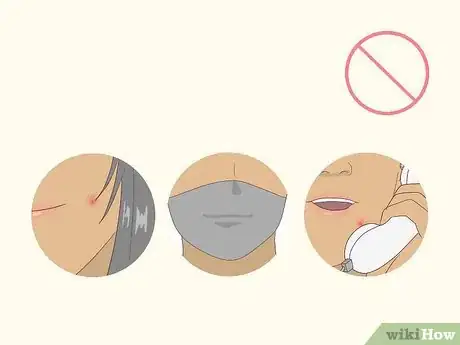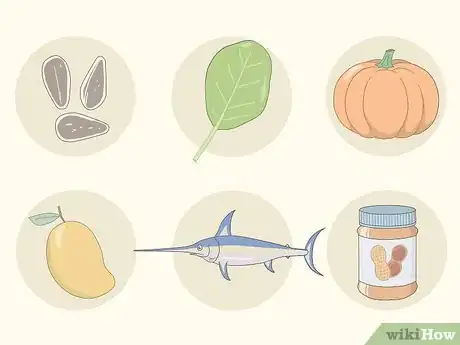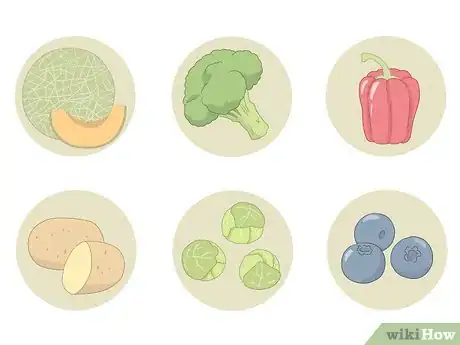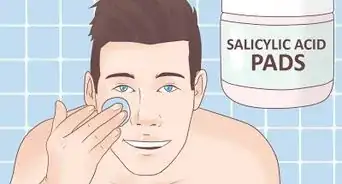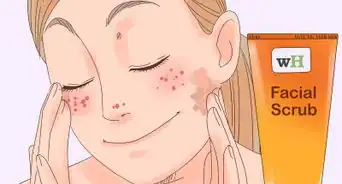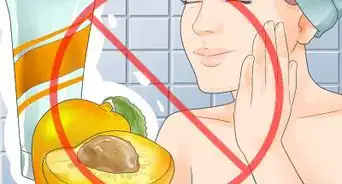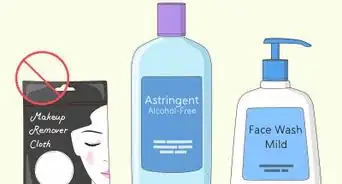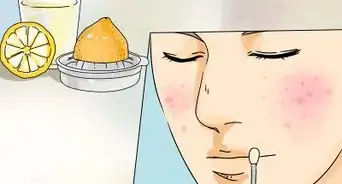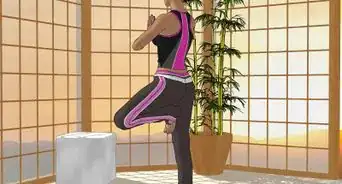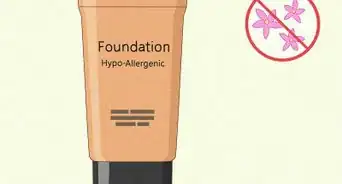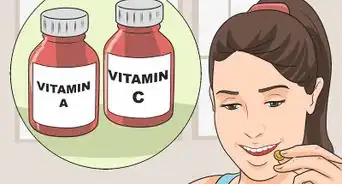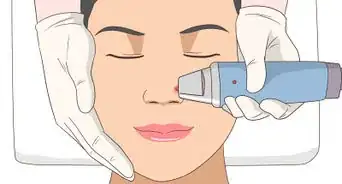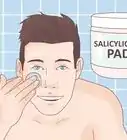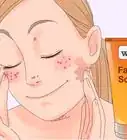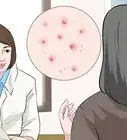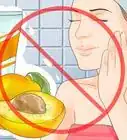This article was medically reviewed by Mohiba Tareen, MD. Mohiba Tareen is a board certified Dermatologist and the founder of Tareen Dermatology located in Roseville, Maplewood and Faribault, Minnesota. Dr. Tareen completed medical school at the University of Michigan in Ann Arbor, where she was inducted into the prestigious Alpha Omega Alpha honor society. While a dermatology resident at Columbia University in New York City, she won the Conrad Stritzler award of the New York Dermatologic Society and was published in The New England Journal of Medicine. Dr. Tareen then completed a procedural fellowship which focused on dermatologic surgery, laser, and cosmetic dermatology.
There are 12 references cited in this article, which can be found at the bottom of the page.
This article has been viewed 130,676 times.
Acne is caused by hormonal fluctuations that stimulate your skin's production of oil. This oil plugs hair follicles, producing the blackheads, pimples, and redness we know as acne. Between 70 and 87 percent of teenagers experience acne, and adults often cope with this skin condition, as well — so if you're searching for ways to reduce the appearance of your skin blemishes, you're far from alone.[1] Most pharmaceutical treatments take a few weeks to become effective, so while you should talk with your doctor about long-term treatment, these are not tactics to reduce redness fast.[2] Fortunately, in the meantime you can utilize a wide variety of options to quickly reduce acne redness.
Steps
Using Household Items
-
1Apply ice. Icing your problem area is the quickest (and cheapest) way to reduce the swelling that causes redness. Ice will reduce the size of your pimples, reduce the pain associated with your blemish, and even shorten the duration of a breakout.[3]
- Ensure your skin is clean and freshly washed.
- Wrap the ice cube in a washcloth. You should never apply ice directly to your skin.
- Place the wrapped ice directly upon your breakout and hold for a minute.
- Give your skin a five-minute break, then reapply as needed for an additional minute.
-
2Coat with lemon juice. Lemon juice fights inflammation and has antibacterial properties.[4] The surface of your skin is healthiest when it's slightly acidic — and your skin's ideal pH is roughly equivalent to the pH of lemon juice.
- Apply for 15 to 30 minutes, then rinse thoroughly.
- Use caution in applying lemon juice if you have sensitive skin.
- This treatment is not recommended for people with darker skin tones. Lemon juice stimulates the melanocytes, or pigment-producing cells, in your skin to produce protective antioxidants. Darker skinned individuals have more melanocytes, which means their skin produces more antioxidants. As a result, application of lemon juice can produce skin spots, especially when the skin is then exposed to sun.
Advertisement -
3Dab with milk of magnesia. Unfortunately, the concealing qualities of milk of magnesia are only truly effective if your skin happens to be the same tone as the milk. If this happens to be the case, this inexpensive cover up is worth pursuing — if not, you'll want to try something else.[5]
-
4Treat with toothpaste. While this treatment should not be used on widespread acne, you can quickly minimize the appearance of smaller outbreaks by applying toothpaste to the affected area. Let the toothpaste sit on the affected area for at least an hour before rinsing (you may even try leaving it on overnight).[6]
-
5Apply honey. Honey is a natural antibiotic and can reduce the inflammation that causes redness. You can use honey straight from the jar as a facial mask, washing it off after about 30 minutes. It can also be used as a spot treatment.
- Consider diluting honey with water and applying as a "honey toner" for overnight treatment. Thinly apply this "toner" and allow it to dry slightly before going to bed.
-
6Douse with eye drops. The drops you use for eye redness can also reduce the red appearance of your acne. Apply with a cotton swab or cotton ball and leave the solution on for about 30 minutes before rinsing.[7]
-
7Cover using concealer. Note that applying makeup over active breakouts may cause additional clogging of your pores, so when possible it's best to avoid using concealer as a solution. When you need to reduce redness in a hurry, however, concealer is a quick and easy way to do so — just be sure to wash your face once you get home.
- Green concealer does a good job of canceling out redness and can then be hidden by using foundation in your natural skin tone. Bear in mind that oily skin can sometimes cause concealer layers to separate, rendering the green visible.
- You may also use gold concealer on white skin tones or brown concealer for Asian, brown, and black skin tones. Again, cover the concealer layer with foundation in your natural skin tone.[8]
Considering Topical Treatment Products
-
1Obtain tea tree oil. Tea tree oil kills the bacteria that cause acne and can remove redness and inflammation. This product may eliminate redness overnight, making it an especially helpful tool for combating redness quickly. It will reduce swelling over the course of a week or so. Sources differ regarding how high a concentration of oil is necessary for effective treatment. Many tea tree oil products are sold in a 5 percent concentration, which has proven effective over time. Consider seeking a 10 percent solution for quicker treatment.[9] [10]
- Test the tea tree oil on a small patch of skin before use. Tea tree oil can sometimes cause a rash or worsen rosacea. If you find that it is worsening redness, stop use immediately.
-
2Purchase a product containing alpha hydroxy acid. This natural acid is found in citrus and other foods. When applied to skin, it helps remove dead cells and unclog your pores.[11] If you're seeking treatment of red acne scars, this may be an especially useful tactic.[12]
- Alpha hydroxy acid increases your sensitivity to the sun, so make sure you wear sunscreen when outside.
-
3Consider a lotion containing green tea extract or zinc. Lotion containing a 2 percent solution of green tea extract has been shown to reduce mild to moderate acne. Zinc products may also reduce acne breakouts.[13]
Making Smart Lifestyle Choices
-
1
-
2Keep hair, clothing, and other irritants off your skin. The less you have touching your face, the less likely you are to introduce bacteria to your already-troubled skin. Wear hair away from problem areas, avoid tight clothing, and refrain from resting your hands or objects such as telephone receivers on your face.[16]
-
3Consume foods containing vitamin E. Vitamin E is an antioxidant; it can repair skin and keep it safe from additional damage. Your body does not produce vitamin E on its own, but it can be absorbed through digestion or through the skin. Its anti-inflammatory properties mean it can reduce redness on your skin. In addition, research suggests vitamin E is expelled from the body through the same substance in your skin that clogs your pores. This means you may naturally clear your pores by consuming vitamin E; the extra vitamin E may push clogs out of your skin.
- Sunflower seeds, almonds, spinach and other leafy greens, pumpkin, red peppers, mangoes, avocados, swordfish, and peanut butter are all good sources of vitamin E.[17]
-
4Eat a diet rich in vitamin C. A water-soluble vitamin that works best in tandem with vitamin E, vitamin C regulates your skin's production of collagen cells. It also boosts your body's immune system, reducing your body's inflammatory response to the bacteria that cause acne (and thus reducing redness).
- Cantaloupe, citrus fruits, kiwi, mango, papaya, pineapple, berries, watermelon, broccoli, Brussels sprouts, cauliflower, green and red pepper, spinach and other leafy greens, cabbage, sweet and white potatoes, tomatoes, and winter squash are all good sources of vitamin C.[18]
Expert Q&A
-
QuestionHow can I get rid of the redness around my blemishes?
 Mohiba Tareen, MDMohiba Tareen is a board certified Dermatologist and the founder of Tareen Dermatology located in Roseville, Maplewood and Faribault, Minnesota. Dr. Tareen completed medical school at the University of Michigan in Ann Arbor, where she was inducted into the prestigious Alpha Omega Alpha honor society. While a dermatology resident at Columbia University in New York City, she won the Conrad Stritzler award of the New York Dermatologic Society and was published in The New England Journal of Medicine. Dr. Tareen then completed a procedural fellowship which focused on dermatologic surgery, laser, and cosmetic dermatology.
Mohiba Tareen, MDMohiba Tareen is a board certified Dermatologist and the founder of Tareen Dermatology located in Roseville, Maplewood and Faribault, Minnesota. Dr. Tareen completed medical school at the University of Michigan in Ann Arbor, where she was inducted into the prestigious Alpha Omega Alpha honor society. While a dermatology resident at Columbia University in New York City, she won the Conrad Stritzler award of the New York Dermatologic Society and was published in The New England Journal of Medicine. Dr. Tareen then completed a procedural fellowship which focused on dermatologic surgery, laser, and cosmetic dermatology.
FAAD Board Certified Dermatologist Even though it can be tempting, avoid exfoliating your skin since you could damage it more and cause more freshness. You can try using alpha hydroxy acid or benzoyl peroxide.
Even though it can be tempting, avoid exfoliating your skin since you could damage it more and cause more freshness. You can try using alpha hydroxy acid or benzoyl peroxide.
References
- ↑ http://www.mayoclinic.org/diseases-conditions/acne/basics/definition/con-20020580
- ↑ http://www.mayoclinic.org/diseases-conditions/acne/basics/treatment/con-20020580
- ↑ http://www.dermadoctor.com/blog/ice-the-secret-pimple-fighter/
- ↑ https://www.ncbi.nlm.nih.gov/pmc/articles/PMC2801997/
- ↑ http://www.facingacne.com/pimples/
- ↑ https://www.nhs.uk/conditions/acne/treatment/
- ↑ http://www.newhealthadvisor.com/How-to-Reduce-Pimple-Redness.html
- ↑ http://www.facingacne.com/pimples/
- ↑ http://www.mayoclinic.org/diseases-conditions/acne/basics/alternative-medicine/con-20020580
- ↑ http://www.facingacne.com/pimples/
- ↑ Mohiba Tareen, MD. FAAD Board Certified Dermatologist. Expert Interview. 26 March 2020.
- ↑ http://www.mayoclinic.org/diseases-conditions/acne/basics/alternative-medicine/con-20020580
- ↑ http://www.mayoclinic.org/diseases-conditions/acne/basics/alternative-medicine/con-20020580
- ↑ Mohiba Tareen, MD. FAAD Board Certified Dermatologist. Expert Interview. 26 March 2020.
- ↑ http://www.mayoclinic.org/diseases-conditions/acne/basics/lifestyle-home-remedies/con-20020580
- ↑ http://www.mayoclinic.org/diseases-conditions/acne/basics/lifestyle-home-remedies/con-20020580
- ↑ http://www.hsph.harvard.edu/nutritionsource/food-sources-of-vitamin-e/
- ↑ https://www.nlm.nih.gov/medlineplus/ency/article/002404.htm
About This Article
If you need to get rid of acne redness fast, wrap an ice cube in a washcloth and apply it directly to the swollen area. You can also dab lemon juice on the area and leave it for 15-20 minutes before rinsing it off, since lemon juice fights inflammation and has antibacterial properties. If you need to disguise the redness quickly, try using a green concealer under your usual foundation. If you're heading outside, apply oil-free moisturizer with sunscreen to the area to protect the inflamed skin. For tips on using other home remedies, like toothpaste, honey, eye drops, read on!
